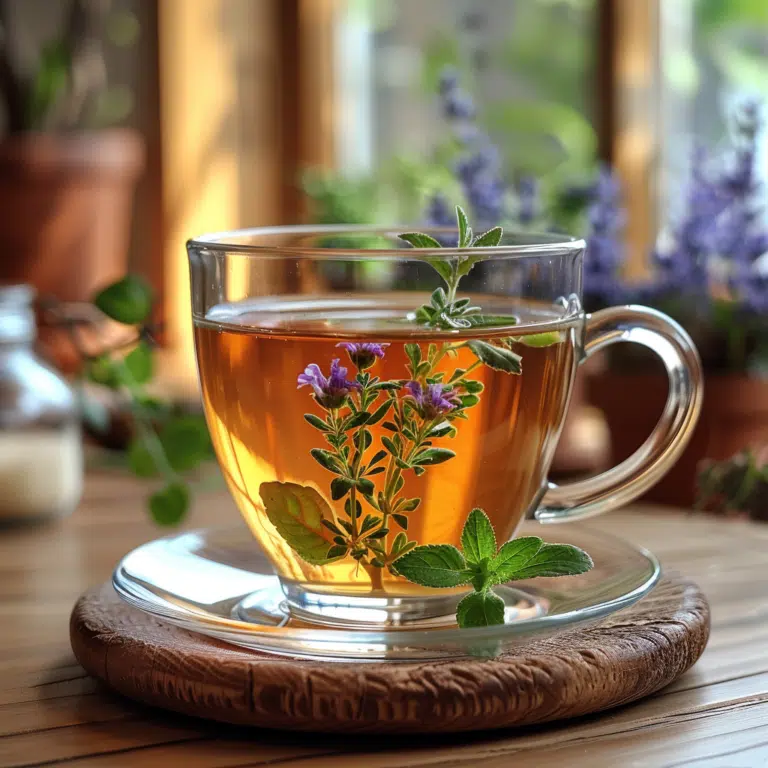In the mosaic of world cuisines, Thai delight stands out with its vibrant tapestry of tastes, where sweetness isn’t just a sugary afterthought, but an essential thread in the culinary fabric. Indeed, to talk about Thai delight is to engage all the senses in a symphony orchestrated by the skilled hands of Thai chefs. So pull up a chair, ready your taste buds, and join us on an epicurean journey through the sweet harmony of Thai cuisine.
The Essence of Thai Delight: More Than Just a Taste Sensation
Thai cuisine has long dazzled diners with its intricate dance of flavors—tantalizing layers of sweet, salty, sour, and spicy notes careen across the palate in a harmonious blend. But Thai delights take sweetness beyond a mere taste, transforming it into an element that binds and balances, creating a sensory experience like no other.
The brilliance of Thai delights becomes most apparent in dishes that require just the right touch of sugar. Like the skilled brushstrokes of an artist, the addition of sugar harmonizes the potent kick of chili, the pucker of citrus, and the deep umami of fish sauce. This isn’t a haphazard sprinkling; it’s culinary calculus, where each granule of sugar is crucial in achieving gastronomic equilibrium.
It’s a formula evident in the iconic pad Thai, where tamarind’s tartness, fish sauce’s saltiness, and palm sugar’s sweetness meld into a delicacy revered across the globe.
Savoring the Sweetness: A Tour Through Thai Delight Desserts
Now let’s indulge in a culinary exploration with a sweet touch. Thai desserts, or kanom, are a delight to the soul, captivating the essence of Thai sweetness.
Diving into Thai desserts reveals not just culinary prowess, but a lineage of tradition and culture where each sweet morsel tells a story, inviting guests to explore the regional nuances that define Thai delights, from Bangkok’s bustling streets to the serene countryside.
| Feature | Description | Relevance/Notes |
|---|---|---|
| Basic Flavor Components | Salty, spicy, sour, sweet | Essential in achieving the characteristic taste of Thai cuisine |
| Common Ingredients | Tamarind paste, palm sugar, fish sauce, crushed red chili peppers | Key ingredients in a traditional pad Thai sauce |
| Sugar in Thai Cuisine | Often a spoonful or two; used in almost every dish | Balances other flavors, not just in pad Thai but across Thai dishes |
| Taste Profile of Pad Thai | Tangy, sweet, spicy, and salty | Ideal pad Thai harmonizes these flavors for complexity and satisfaction |
| Importance of Balance | Integral for the perfect dish | Thai culinary philosophy emphasizes a harmonious blend of all flavors |
| Formula for Traditional Pad Thai Sauce | Equal parts palm sugar, tamarind paste and fish sauce | A guideline for authentic flavor |
| Preparation Tips | Perfectly cooked noodles, fresh ingredients, proper heat and timing | Key for texture and flavor enhancement |
| Serving | Often accompanied by lime wedges, peanuts, and fresh herbs | Enhances flavor and provides textural contrast |
| Dietary Considerations | Can be adjusted for vegan/vegetarian by substituting fish sauce with soy sauce or a vegan alternative | Thai cuisine is adaptable to various dietary requirements |
| Popularity | Loved worldwide, epitome of Thai street food | Signifies the global appeal and adaptability of Thai dishes |
Perfecting the Palate: How Thai Delight Savory Dishes Incorporate Sweetness
Venturing beyond the realm of kanom, Thai delight cuisine embeds sweetness into its savory dishes with ingredients like palm sugar and sweet chili sauce, enhancing and rounding out the flavors.
In every clay pot and wok across Thailand, you’ll find the philosophy that to truly delight, one must master the whisper of sweetness within the bold chorus of flavors.
The Chefs Behind the Sweetness: Pioneers of Thai Delight
The artisans responsible for crafting these harmonious dishes deserve their accolades. Thai chefs like Chef Pim Techamuanvivit, who deftly weaves the essence of Thai cooking with her stories and dishes at the Michelin-starred Kin Khao in San Francisco, show the world that Thai delight is both an art and a discipline. Chef Pim, among others, contributes to the global dialogue on Thai cuisine, ensuring that the sweet balance remains a signature of Thai dishes.
Interviews with chefs reveal their intimate relationship with sweetness, and it’s akin to what actress Emma Dumont might convey in a role that requires both subtlety and intensity—precision is key, as described in her work.
Novel Thai Delight Treats: Innovation Meets Tradition
Innovation in the culinary domain is a spicy escapade, rife with chefs adding their spin to classic formulas—pushing boundaries while preserving the essence. Fusion dishes that interlace traditional Thai flavors with unexpected twists cater to the adventurous foodie seeking the familiar whisper of sweetness in new avatars.
From chocolate-infused panang curry to lemongrass-flavored ice creams, the endeavor to innovate, much like the surprising curly mullet hairstyle trend, marries nostalgic charm with a modern edge, creating a Thai delight that is contemporary yet rooted in tradition.
A Sweet Journey Through Thai Delight: Regional Variations
Embark on a journey through the diverse landscapes of Thailand, and you will discover the regional shifts in sweetness:
These differences in regional palate create a fascinating mosaic that truly defines the complexity of Thai delight cuisine.
Crafting Your Own Thai Delight: Tips and Tricks
Bringing the sweet magic of Thai delight into your home kitchen is an adventure worth embarking on. Begin with stocking up on essential ingredients such as palm sugar and tamarind paste, which are the keystones of Thai sweetness balance.
Recipes to try include the ever-popular pad Thai, with its perfect trifecta of tamarind, palm sugar, and fish sauce, just like the indispensable trio of Ira Rules For withdrawal in financial planning.
Another tip is to always taste and adjust. Thai cooking is an interactive process, and your palate is the ultimate guide to achieving that sought-after sweet equilibrium in every dish.
The Aftertaste of Thai Delight: Embracing Sweetness in Global Cuisine
As our savory sojourn comes to a close, it’s evident that the allure of Thai delight cuisine and its versatile sweetness has penetrated the gastronomic fabric of the world. Like the rise of insightful comedic writers such as Claire Mulaney who bring depth and diversity to the realm of entertainment, the influence of Thai cuisine’s sweet nuance has inspired a new wave in international dining and culinary fusion.
As we look to the future, it’s clear that the sweet balance embodied in Thai delight dishes will continue to fascinate and inspire generations of chefs and food lovers alike, perpetuating a legacy of taste that captivates and comforts, one delightful spoonful at a time.
A Sprinkle of Fun in Every Thai Delight Dish
When you’re savoring the complexity of flavors in a Thai delight dish, it can sometimes feel as if every ingredient has a personality as robust as Kevin Hart—even though, unlike Kevin Hart’s height, the subtleties of Thai spices don’t always stand out at first glance. But give it time, and you’ll notice how the sweetness plays off the heat, much like a comedy duo on the big screen.
Now, let’s blow through some facts like a Ryobi leaf blower clears a yard of autumn leaves. Did you know that one of the staples of Thai cuisine is the tamarind? Its sour-sweet profile is like the mullet Curls of the culinary world; business in the front, party in the back. It’s an essential ingredient that ties together the sweet, the sour, and the savory in a vibrant dance of flavors—turning each dish into a feast for the senses.
Sweet Surprises in Thai Cuisine
Speaking of sweet, while Thai food expertly balances all four taste profiles, its knack for blending sweetness into savory dishes is truly remarkable. Just like Dewanda wise steals scenes with her dynamic acting, sweet elements in Thai dishes such as palm sugar add depth that elevates the entire meal. This masterful interplay of flavors demonstrates that in the realm of Thai delights, there’s always more than meets the palate.
So next time you dive into a plate of Pad Thai or relish a sip of Tom Yum soup, remember these fun facts. Every mouthful is a celebration, an intricate tapestry of taste that’s as surprising and multi-dimensional as life itself—sweet moments can come from where you least expect them, making the experience nothing short of delightful.
Why is Thai cuisine so sweet?
Why is Thai cuisine so sweet?
Oh, you’ve noticed, huh? Well, here’s the scoop: It’s all about striking that tasty balance of flavors. In the Land of Smiles, cooks have quite the sweet tooth, often tossing in a dash or two of sugar into their dishes. Yep, from the lip-smacking pad Thai to the refreshing green papaya salad, Thai cuisine is like a playground for your taste buds, playing with salty, spicy, sour, and sweet notes to hit that culinary sweet spot.
Why is pad Thai so sweet?
Why is pad Thai so sweet?
Alright, so pad Thai’s got a rep for being sweet, and here’s the deal. The secret to that addictive flavor is all in the sauce – a melodic mix of tangy tamarind paste, lush palm sugar, a punch of crushed red chili peppers, and a splash of fish sauce. Picture this: Each ingredient gets a third of the stage, creating a symphony of taste that’ll make your mouth sing!
Why is Thai food so addictive?
Why is Thai food so addictive?
Ever wondered why you can’t stop craving Thai food? It’s like your taste buds have hit the jackpot, and here’s why: that mix of flavors is downright hypnotizing! The Thai kitchen is like a flavor alchemist, blending the spicy, sour, sweet, and salty to perfection. Add in the texture play, and bam, you’re hooked – it’s that simple.
Do Thai people eat a lot of sugar?
Do Thai people eat a lot of sugar?
Well, let’s just say Thai people aren’t shy about getting their sweet fix. While it might seem like they’re spooning sugar into their grub like there’s no tomorrow, it’s really all about finding that flavor harmony. So yes, a sprinkle here and there is pretty standard fare in a Thai kitchen.
Why do people like Pad Thai so much?
Why do people like Pad Thai so much?
Pad Thai? Oh, it’s the bees knees! Foodies go gaga over it for its slam dunk flavor balance — tangy, sweet, spicy, salty, you name it. Then there’s the texture – those soft noodles with a bit of crunch from the peanuts. It’s like every forkful is throwing a party in your mouth, and guess what? You’re always invited!
Why is Pad Thai fishy?
Why is Pad Thai fishy?
“Fishy?” Well, it’s not like you’re munchin’ on a tuna sandwich here, but Pad Thai has got that hint of the sea, and it’s all thanks to the fish sauce. This umami-packed potion is a staple in Thai cooking, and it’s the secret ingredient that reels in that savory, salty kick which makes the Pad Thai a serious catch!
Why do Thai people eat Pad Thai?
Why do Thai people eat Pad Thai?
Pad Thai and Thai folks? It’s a classic love affair! This dish is a national icon for a reason – it’s super versatile, totally tasty, and hits all the right flavor notes. Whether served up street-side or cooked at home, Pad Thai is a go-to for a quick, satisfying meal. Seriously, what’s not to love?
Is traditional Thai food sweet?
Is traditional Thai food sweet?
“Sweet” as in “awesome”? Absolutely. But if we’re talking taste, then yes, traditional Thai food often has a sweet side to the story. Remember, it’s all about that famous flavor quartet – and sweetness plays a leading role in many beloved dishes. So expect a hint of sugar to pop up more often than not.
Is Thai food meant to be sweet?
Is Thai food meant to be sweet?
Meant to be? Well, it’s not like they’re baking cupcakes, but Thai food definitely flirts with sweetness. The key is balance. You’ll find just enough sugar to buddy up with the spicy, sour, and salty flavors, making each meal a taste adventure that’s not overly sweet but just right.
What is the sweet taste in Thai food?
What is the sweet taste in Thai food?
Ah, the sweet mystery of Thai cuisine. That sugary kick you’re tasting? It usually comes from palm sugar, a darling of Thai cooking. This natural sweetener is like the culinary co-pilot, helping steer the dish to that bliss point where all the flavors sing in harmony.
Why Thai food is so delicious?
Why Thai food is so delicious?
Why is Thai food so scrumptious, you ask? It’s like the perfect storm of flavors with a sprinkle of magic. Thai cooks are like DJs for your taste buds, blending spicy, sour, salty, and sweet into one killer track. Each bite’s a flavor bomb, making you dive back in for more. Trust us, it’s not just tasty; it’s a full-on taste experience!


























